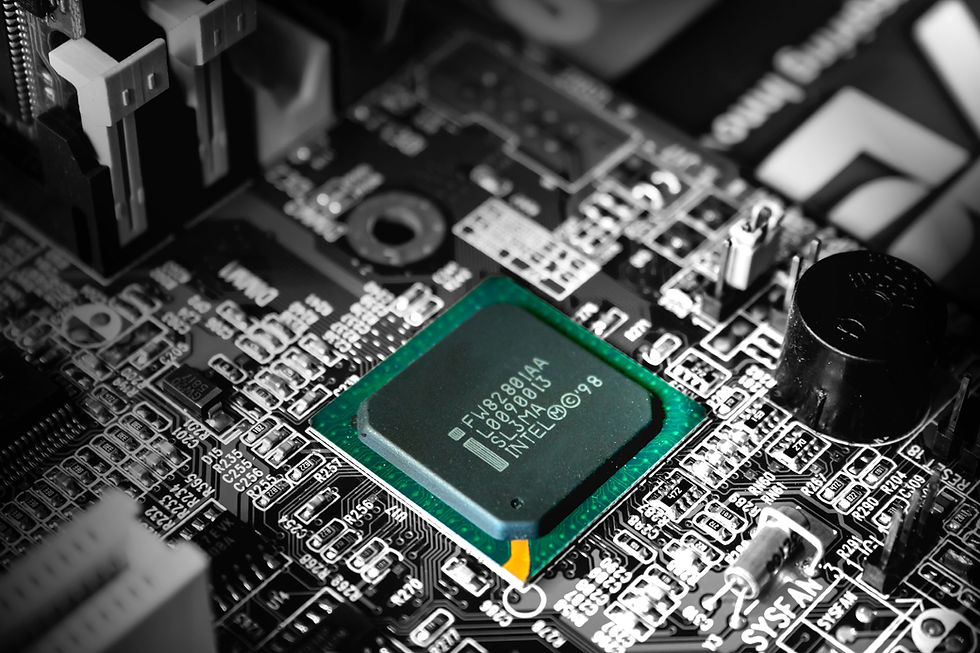What is "Designing for Space"?
- Ben Seaman
- Mar 5, 2024
- 3 min read
Designing electronics for space presents a unique set of challenges due to the harsh environment, extreme conditions, and the need for reliability and longevity. Here is a Convergences typical process for designing for space/harsh environment.
Requirements for Space Environment:
Familiarize yourself with the specific mission requirements, including the target orbit, radiation levels, temperature variations, and vacuum conditions.
Consider the duration of the mission and the expected lifetime of the electronics.
Select Radiation-Hardened Components:
Choose radiation-hardened or tolerant components that can withstand ionizing radiation in space.
Use radiation-hardened processors, memory, and power management components. EEE parts selection is critical early in design process.
Thermal Management:
Space experiences extreme temperature fluctuations. Design the electronics with effective thermal management systems such as heat sinks, thermal coatings, or phase-change materials.
Incorporate thermal shielding to protect sensitive components from direct sunlight and extreme cold. We always recommend simulation for thermal, vibration early in design process with our great partners at STL Engineering.
Power Management:
Optimize power consumption to ensure efficient use of limited energy sources such as solar panels or batteries.
Implement redundancy and fault-tolerant power systems to prevent mission failure due to power issues.
Ergonomics and Size Constraints:
Space missions often have strict size and weight limitations. Design compact and lightweight electronics.
Ensure that components are easily replaceable if necessary.
EMI/RFI Shielding:
Shield the electronics against electromagnetic interference (EMI) and radio-frequency interference (RFI) to prevent signal degradation.
During initial concept design review it is important to run EMI analysis to improve PCB/shielding to minimize risk. Don't forget CM filters, protection or other passive suppression.
Testing and Simulation:
Perform rigorous testing and simulations under simulated space conditions to identify weaknesses and vulnerabilities.
Use environmental chambers to mimic extreme temperature and vacuum conditions. Prequal testing is imperative to mission / formal qualification success.
Redundancy and Fault Tolerance:
Incorporate redundancy in critical systems, including processors, sensors, and communication equipment.
Implement fault-tolerant software and hardware to handle unexpected errors gracefully. SEU mitigation strategies required.
Communication:
Design reliable communication systems that can transmit data to and receive commands from Earth over long distances.
Implement error correction and encryption mechanisms to ensure data integrity and security.
Remote Diagnostics and Updates:
Enable remote diagnostics and software updates to fix issues or improve performance during the mission.
Ensure that updates do not introduce vulnerabilities.
Quality Assurance and Reliability:
Follow stringent quality assurance processes to reduce the likelihood of defects.
Conduct reliability assessments to estimate the lifespan of the electronics under space conditions.
Documentation and Traceability:
Maintain thorough documentation of the design, testing, and manufacturing processes for traceability and future reference.
Regulatory Compliance:
Ensure compliance with international space and aerospace regulations and standards, such as those from NASA or the European Space Agency.
Environmental Considerations:
Plan for the end of the mission, including disposal or deorbiting of the spacecraft to minimize space debris.
Collaboration and Review:
Collaborate with experts in space electronics and engage in peer reviews to gain valuable insights and improve the design.
Lifecycle Management:
Plan for long-term support and maintenance of the electronics, considering the possibility of extended mission durations.
Designing electronics for space is a complex and highly specialized task that requires a multidisciplinary approach, collaboration with space agencies, and adherence to rigorous standards. Additionally, staying updated with the latest advancements in space technology and materials is essential for success in this field.
Feel free to message us to inquire with our Space experts at Convergence .





Comments